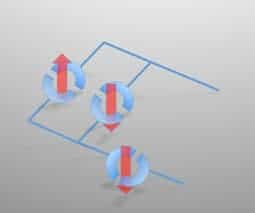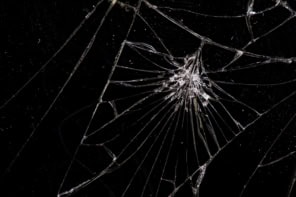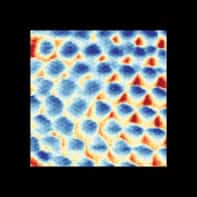
It could be possible to make superconductor-based circuits simply by using a beam of X-rays to control the positions of dopant atoms within a suitable material. That is the prospect offered by new research carried out by physicists in Italy and the UK, which shows how tiny regions of a copper-oxide compound can be transformed into a superconductor by exposure to X-rays of a high enough intensity. With further development, the technique could be used to make circuits containing superconducting quantum interference devices (SQUIDs), which could find use in quantum computers.
Last year a team led by Antonio Bianconi of the University of Rome “La Sapienza” used X-rays to probe the structure of lanthanum copper oxide, which is a high-temperature superconductor. Some physicists believe that the copper-oxide compounds known as cuprates owe their superconducting properties to the way in which dopant oxygen ions are distributed in layers between the copper oxide. Indeed, Bianconi’s group found that when lanthanum copper oxide is superconducting, the oxygen ions display a fractal pattern. In other words, some of the ions arrange themselves into stripes, and while there are many small such ordered regions there are far fewer larger ones – a power law distribution that is the hallmark of fractals and which is also seen, for example, in protein structures within living cells.
Order from disorder
In the latest work Bianconi and colleagues used X-rays to study the time-evolution of lanthanum copper oxide. Working at the ELETTRA synchrotron in Trieste, the team first heated up a sample of the material to about 50 °C to create disorder in the oxygen ions. Then they brought the sample back to room temperature and exposed it to an X-ray beam from the facility while using a CCD detector to record the X-rays reflected from the surface of the sample.
When the intensity of the beam was relatively low, the ions remained disordered. More precisely, the team found many small regions of order but no larger ones, which meant that the material was not superconducting. But once the intensity crossed a certain threshold the researchers discovered that larger regions of order began to emerge and, as a result, the material became superconducting. They also found that the time taken to reach this superconducting state depended on the intensity of the beam. “The superconductivity is like a plant,” says Bianconi. “It needs a certain minimum intensity of light and then it grows over time.”
Carving out wires
The researchers then narrowed down the X-ray beam so that it was just a tenth of a millimetre across and found that the fractal-like regions occurred only where the beam struck the sample. In other words, they say, a directional, narrow X-ray beam could be used to carve out superconducting wires and components within an otherwise non-superconducting sample of lanthanum copper oxide. And they say that this process could be repeated many times over on a single piece of the material, just as a compact disc can be written to multiple times. Whereas the surface of a CD is wiped clean and then written to using laser beams, in this case the material surface was restored to its disordered state using a flash of warm air, although Bianconi says that lasers could also be used.
According to Bianconi, this technique could be used to make circuits containing SQUIDs, which might form the basis of qubits inside a quantum computer. He believes this would be easier to carry out than the lithography currently used to manufacture SQUIDs because it would require no photosensitive mask and no chemicals to wash away that mask. “You shine the X-rays directly onto the active material and then move the X-rays around like you would a pen,” he says.
Bianconi says that his group hopes to make SQUIDs in this way using the facilities of the London Centre for Nanotechnology, run jointly by University College London and Imperial College. He also believes it should be possible to extend the principle beyond superconductors, to use X-rays to etch out electronic circuits more generally. Further into the future, he even envisages computers using the technique to modify their own circuitry in order to solve ever more complex problems. “Using more complex materials than silicon gives you this greater flexibility,” he says.



